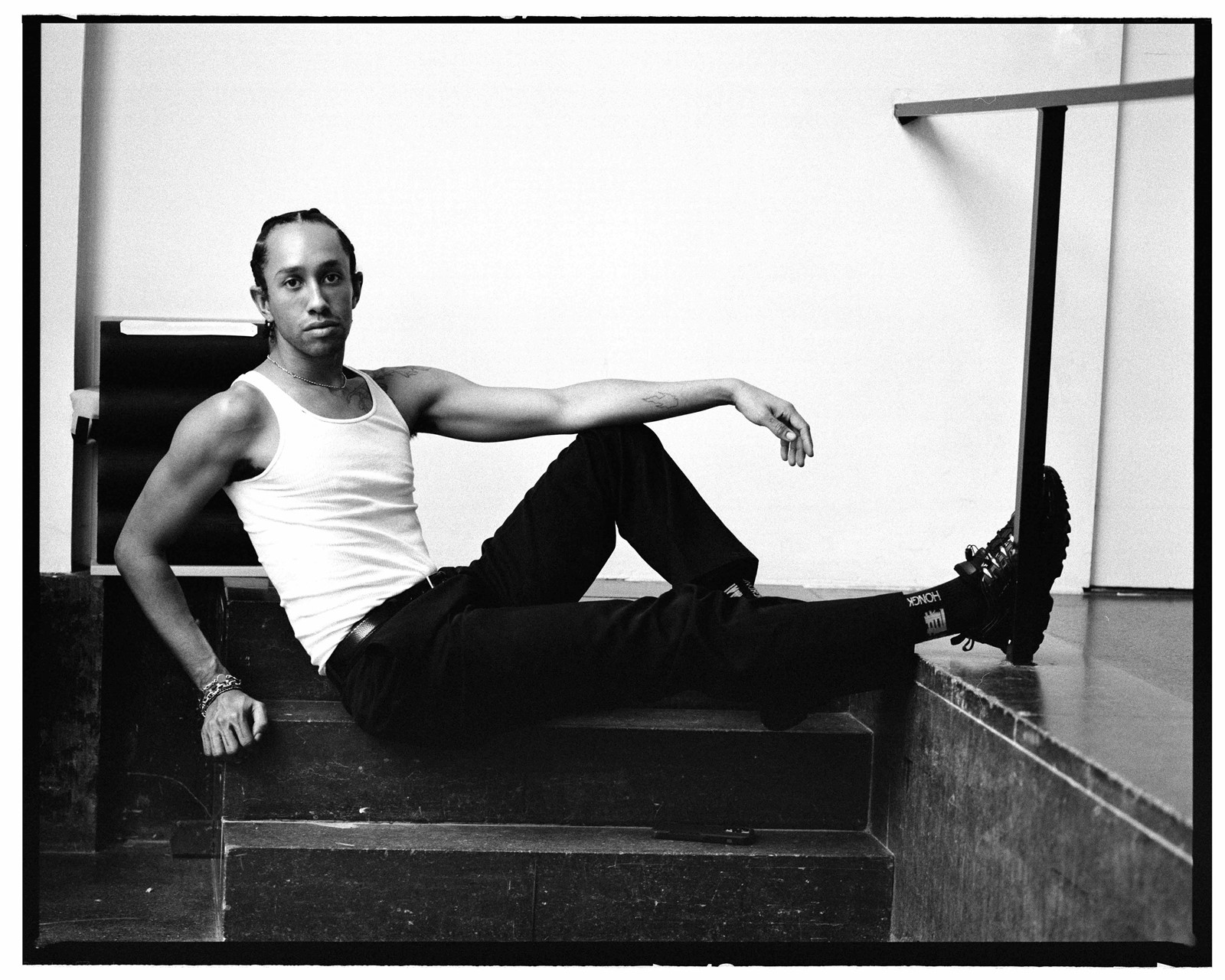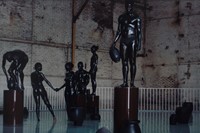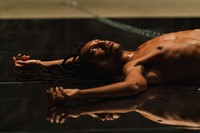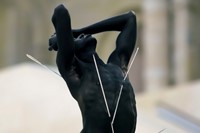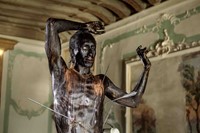Art historian, curator and writer Alayo Akinkugbe is behind the popular Instagram page A Black History of Art, which highlights overlooked Black artists, sitters, curators and thinkers, past and present. In her column for AnOthermag.com titled Black Gazes, Akinkugbe examines a spectrum of Black perspectives from across artistic disciplines and throughout art history, asking: how do Black artists see and respond to the world around them?
Miles Greenberg is the New York-based Canadian artist known for his grand and strenuous durational performances. In his work, Greenberg and other performers often appear in costume, with oiled skin, alien-like white contact lenses or slathered in jet-black body paint. But in Oysterknife, which he describes as “the hardest thing [he’s] ever done with [his] body” Greenberg was dressed in ‘civilian garb’.
This performance, in which Greenberg walked on a conveyor belt for 24 consecutive hours without interruption, was originally live-streamed from Montreal, Canada in July 2020 in collaboration with the Marina Abramović Institute. The film of the performance is having its UK premiere at London gallery Albion Jeune, alongside Douglas Gordon’s 24 Hour Psycho (1993) in the exhibition Twenty Four Twenty Four.
Below, Miles Greenberg discusses the influence of authors like Zora Neale Hurston, his odes to the anonymous “blackamoor” sculptures in Venice, and learning to sculpt with marble.
Alayo Akinkugbe: Let’s start with the name of your performance which is being screened at Albion Jeune, Oysterknife. Where does that title come from?
Miles Greenberg: I wrote this piece very quietly in my childhood bedroom, quarantining in 2020, on the day that Ahmaud Arbery was shot [while he was running]. I was thinking about this very simple gesture of cardio, thinking of a kind of poetry to strip away the violence and find a more climactic ritual, for an end like that. This was a very private background to [Oysterknife]; until now I haven't really spoken about it very much publicly. That was the initial catalyst.
It was a very odd time because I felt like my own quiet fear, [that] low-level constant fear of the police, of violence, of a dynamic of subjugation was very private, and my own head had suddenly exploded all over the internet. And everyone kept asking me if I was okay, about something that I actually felt was a secret. The title comes from Zora Neale Hurston’s essay, How it Feels to Be Coloured. Most of the time, I don’t know what my work is about until after I show it. I had a lot of loose feelings [that] got consolidated through this piece.
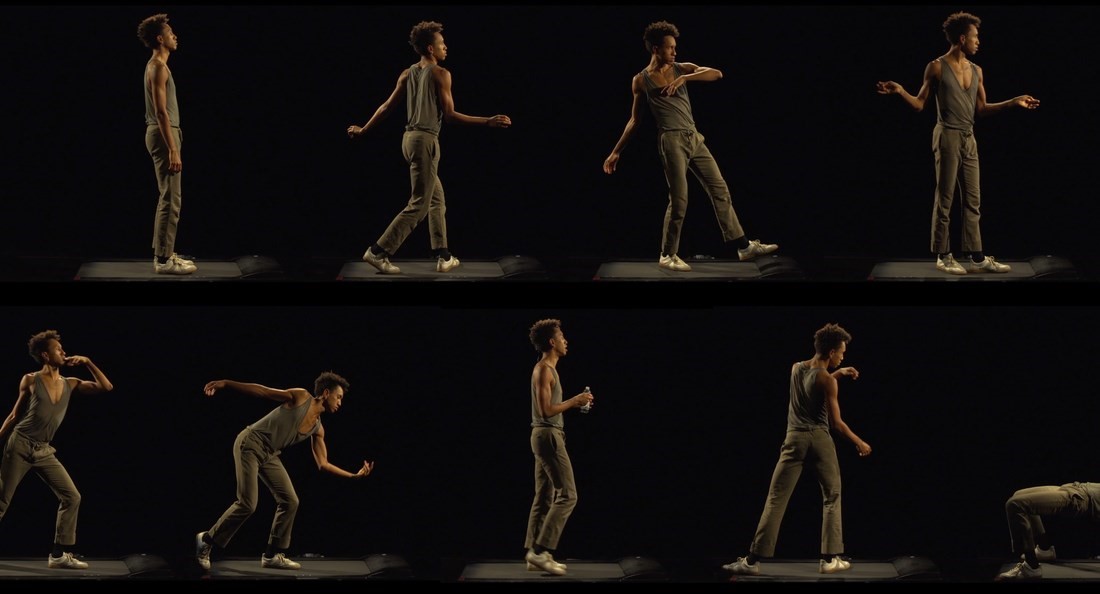
AA: You left formal education when you were 17 and started to work independently as an artist. At such a young age, what spurred you on to pursue an independent path?
MG: At school, I realised that I [already] knew a lot of the work that we were talking about. I had seen some of it with my mother, who took me everywhere and gave me an education in the field. I intuitively knew that [school] wasn’t the right fit. I had just started working and I was offered a couple of group shows that weren’t affiliated with school so I thought I’d just try a practice for a year. Then I got offered a residency in Beijing, so I pursued that. Then I did a residency in Paris and stayed there for what turned into three and a half years.
“It’s important to emphasise that the work is not about pain … It’s certainly not about my Black pain and it’s not about this perpetual theatre of Black death that we live in” – Miles Greenberg
AA: What is it about durational performance and pushing your body to its limits that attracts you? Has performance been something you’ve wanted to do all your life?
MG: It’s totally incidental. I’m not particularly interested in the performance [aspect]. My brain works like a sculptor, although performance has always been something I [am] fascinated by because of how acutely and forcefully our emotional reflexes are to seeing other human bodies. I always felt very strongly about classical sculpture when I would see Greco-Roman statuary [for instance]. I think your heart responds very fast to seeing limbs and torsos and things that you recognise.
Viscerality is something that I’ve always wanted to play with. I love the immediacy of performance, I love that as you’re making it, the audience is already consuming it. I was first introduced to it by Marina [Abramović], at [the exhibition] The Artist is Present. My mum took me to see that show at MoMA when I was 12 and it kind of changed my life. But I’m also making marble [sculptures] right now, which I’m excited about. I’m learning to carve.

AA: You often reference statues of “blackamoors” in your work, like in your recent performance Sebastian, which was performed in the opening week of the Venice Biennale. Why do you draw on this kind of imagery?
MG: When I was nine, I remember going to this museum Ca’ Rezzonico in Venice with my mum. It had dozens of these Ebony statues of enslaved people and soldiers from the 17th century. They were extremely intricate, but the figures were parts of tables or chairs, gripping onto the arms of seats.
Their [functions] were structural; a few of them were pillars and they held the space together but, they’re the only figures in that space that don’t have any name or identity. Any depiction of any white person, whether it’s nobility or a mythological character can be named, each of them has a history, and somehow that just didn’t make it to the Black people. Seeing those figures shifted something in my brain chemistry, and I remember it being equally inspiring and traumatising at the same time.
I think of Kerry James Marshall and so many artists who [use] Blackness as a metaphor, who have taken it and exaggerated it. I guess I’m just trying to live in that universe and find my own language to own and create poetry around being a shade.
AA: And Oysterknife is being screened in London alongside video artist Douglas Gordon’s renowned 24 Hour Psycho (1993).
MG: I’m really excited to be going head to head with Douglas Gordon in this show. He’s just got a really cool mind. The first time I visited his studio in Berlin I was around 18. He walked around the whole time with an axe in his belt, which I just kept staring at, then at one point, he whipped it out and threw it from ten metres away to the furthest wall, and it landed right in the middle of a print. I was like, “holy shit.” I’m excited to be in dialogue with his work.
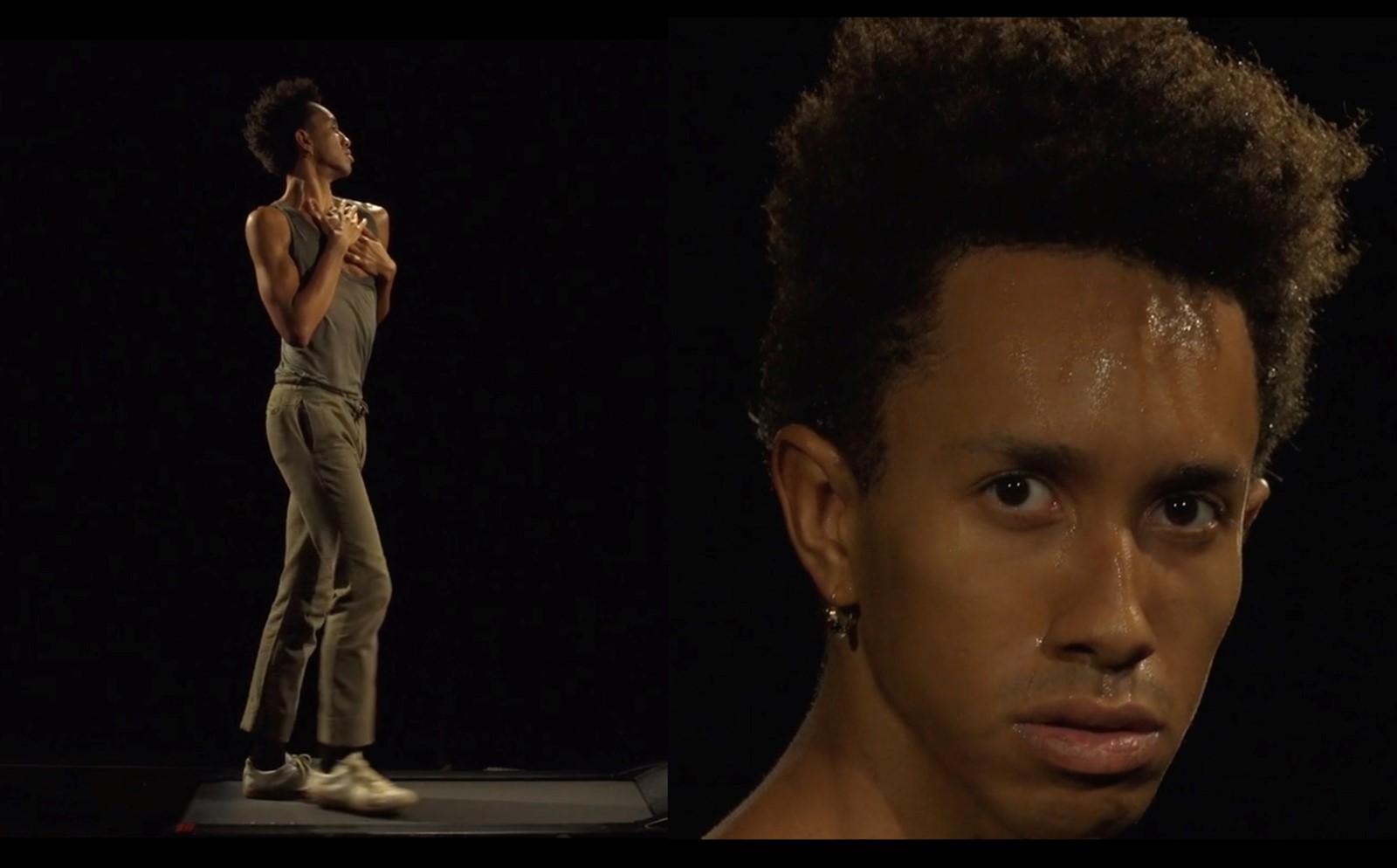
AA: How is Oysterknife, as you have described it before, “a love letter to the performance art of the 1970s, and more specifically to the great Black pioneers of endurance such as Senga Nengudi, Pope.L and David Hammons”?
MG: Oysterknife was first presented by the Marina Abramović Institute. Marina and I were discussing it ahead of time, and we were thinking about what I should wear. It was the first piece I’d ever done wearing civilian garb. She told me that in the 70s, [performance artists] would just wear either dirty white, dirty black or dirty grey. So I went with dirty grey. [The performance] was extremely pared down, extremely simple, extremely straightforward, but also extremely difficult. It remains the hardest thing I’ve ever done with my body.
It’s important to emphasise that the work is not about pain. It’s not about suffering. Ultimately this work, even though its origin came from the murder of a Black man at the hands of racist militia, it’s still not about pain. It’s certainly not about my Black pain and it’s not about this perpetual theatre of Black death that we live in. Pain and discomfort can be used just as much as ecstasy and pleasure, as a doorway into an understanding of our bodies. It’s really, really about life.
Twenty Four Twenty Four by Douglas Gordon and Miles Greenberg is on show at Albion Jeune in London until 28 July 2024.
